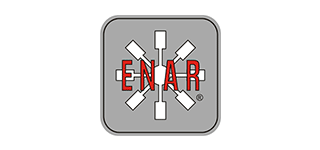

What is the difference between a blue crab and a Kamchatka crab?
Since the second half of the last century, Kamchatka crabs have become not only a popular, but also a very scarce food. In those years, it was possible to buy Kamchatka crab mainly in the form of a cherished tin can with the inscription SNATKA.The growing demand for crab products contributed to the development of fishing and extraction of other species of Far Eastern crabs. By the end of the nineties, it was possible to buy several types of crab. One of them is a blue crab. It quite rivaled the Kamchatka crab in size. Let's try to figure out how the Kamchatka crab differs from the blue crab.Description of the blue crab species Despite the fact that the blue crab is common in the same place as the Kamchatka crab, it differs from the latter in appearance and biology.The blue crab is a typical craboid with four pairs of walking legs. Since this representative of marine crustaceans belongs to the ten-legged sea crayfish, he also has an inconspicuous fifth pair of legs. The reduced legs are bent under the carapace. In terms of the size of the carapace, weight and leg span, the blue crab is comparable to the Kamchatka crab. The size of the shell in males is 22-24 cm, in females -16 cm. Very often there are individuals weighing five or more kg.The upper part of the blue crab is red-brown with a blue tint. The side surfaces have spots of orange or yellow hue. The lower part of the shell of the blue crab is not colored. It is white or white-yellow in color.There are a couple of large and several small thorns on the upper part of the carapace above the cardiac region. Young individuals do not have thorns yet, in their place there are only small rounded bumps.Spawning migrations of blue crab females take place twice a year, since there are generations of females in its population that spawn in even and odd years.You can buy blue crab as often as Kamchatka crab, in recent decades it has been the object of fishing.Kamchatka crab The size of the shell of these craboids can reach up to 26 cm in diameter in males and up to 20 cm in females. The weight can reach up to seven kg. Both males and females have a red-brown color with purple spots on the lateral surfaces. Also, the shell of some individuals may be painted in purple, olive colors of different shades. Sometimes there are instances of blue color. The underside of the walking legs from the claw to the thick segment is highly pigmented. In live crabs, it has a red-brown color. The rest of the lower part is light in color. There are three pairs of thorns on the carapace above the gastric and cardiac areas. Both young and adult individuals have them, regardless of gender. Spawning migrations of females and males of the Kamchatka crab occur once a year and they coincide with the molting period in females, which takes place in the summer months, while males of the Kamchatka crab molt mainly in winter, in January.If you need to buy a live Kamchatka crab, then it can be determined precisely by the color and number of spikes.However, crabs that were cooked in the first hours after the catch are most often on sale. Like many marine and freshwater crustaceans, crabs change their color and turn red during heat treatment. It is in this boiled and then frozen state that crabs come to the consumer. Naturally, it is very problematic to distinguish a boiled blue crab from a boiled Kamchatka crab, but if you buy a crab of both types and carefully examine them, you can still find differences.How to identify boiled crabs If a whole blue or a whole Kamchatka crab is purchased, it is enough to inspect the upper part of the carapace and distinguish these species by the number of spikes. However, if the spikes were damaged during transportation and it is impossible to consider them, then it is still possible to distinguish a blue crab from a Kamchatka crab in boiled form. Moreover, even a layman can do this, and even in the case when not whole copies are offered for sale, but only walking legs of crabs.It turns out that after cooking, the shell of a blue crab and the upper part of its legs turn red, but its legs on the lower side remain light and have no pigmentation. Whereas parts of the legs of the Kamchatka crab, such as the claw, thin segment, knee and part of the thick segment on the underside retain pigmentation.These two types also differ in taste. And although the tastes of all people are different, it should be noted that the Kamchatka crab meat is more tender, juicy and sweet.The meat of the blue crab is more dense, dryish. Nevertheless, it should be noted that the taste of blue and Kamchatka crab meat is very similar, only a real gourmet and an experienced chef will be able to distinguish them.When choosing a Kamchatka crab, you need to know that its shell is thinner and the yield of meat as a percentage of the total weight of the crab is greater. The shell of the blue crab is thicker and, accordingly, heavier. It should be noted that you can buy a blue crab at a lower price.In any case, the freshness and quality of crab products is always more important than the species of edible crabs. Clube de jogos Sapphirebet oferece a oportunidade dizer em slots por dinheiro real. Entre. Entre. Dê uma olhada nisso. Página https://sapphirebet.com/br/live/cyber-zone/esports-ufc Registre-se e aposte em championship ao vivo/linha agora mesmo!
Síguenosen
NuestrosColaboradores







